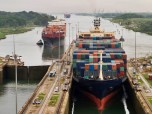By the nineteenth century and during the time of the Industrial revolution, London was already a vast and sprawling metropolis, but one that was suffering from outbreaks of fatal diseases such as Typhoid and Cholera. The sewerage system for such a huge city was indeed nonexistent, human waste rife with bacteria floating down the river Thames.
Parliament
Parliament calls for action to upgrade the London sewerage system
There was an urgency to solve this problem, and parliament ruled that a new system was necessary. The job was given to chief engineer Joseph Bazalgette. What would follow is now commonly known as one of the seven wonders of the industrial world, more than one hundred miles of sewers that would divert the waste of the over populated city downstream from the city center.
Human Waste
The human waste that had been openly polluting the residents of the City was diverted into the Thames estuary by incorporating six main interceptor sewers. The creation of these new sewers allowed for new roads, public gardens, and even the circle line of the famous London Underground.
Three of the said sewers were located to the north of the river, the most southerly one actually being constructed into the Thames embankment. It took just six years to construct the hundred miles of intercepting sewers, which were connected to literally thousands of miles of smaller and more localized sewers.
These sewers were on the whole designed to flow in an easterly direction, but in certain places pumping stations were constructed that would raise the water level. Of course, as time passed, the population of London increased, and more improvements were made to ensure that pollution on the Thames Estuary and the North Sea were kept to a minimum.
During Rainfall
The famous system was incorporated in the nineteenth century into a city that was expanding at an alarming rate and could cope with rainfall of up to around six millimeters. What this essentially meant was that with an ever expanding population, the sewers were becoming increasingly full, and the nineteenth century London Sewerage system would quickly overflow.
In times of heavy rainfall, the levels in the sewers, a mix of rain water and raw human waste would rise and the streets of London as well as the River Thames would quickly become awash with a repulsive and stomach churning site of raw sewerage. The result of this was once again a huge health risk to the city population, and something that would be rectified, but not fully until well into the twentieth century.
Improvements
Storm water pumping stations were added to the already present sewerage system, solving the immediate problem that was occurring when the city suffered from high rainfall. Talks are however still in motion to add transfer tunnels under the river bed of the River Thames, which will support an ever fast growing city population, the project having a completion date for the year 2020.







